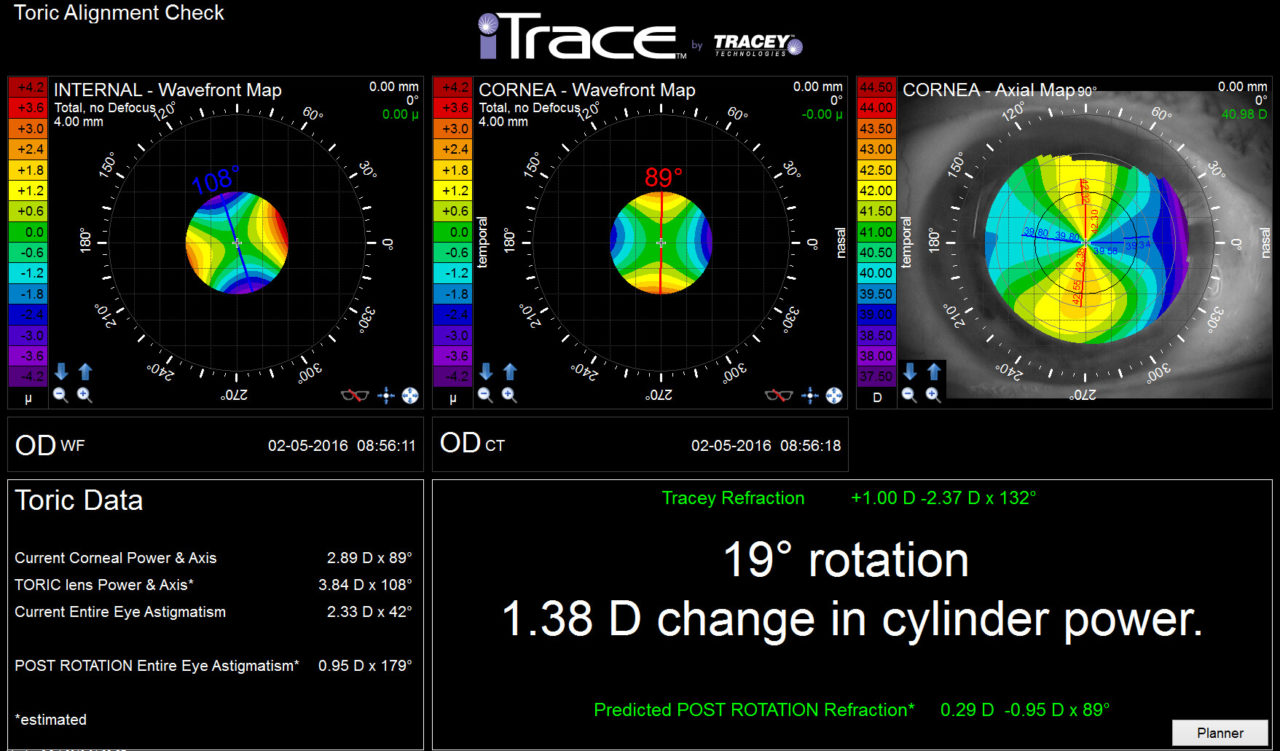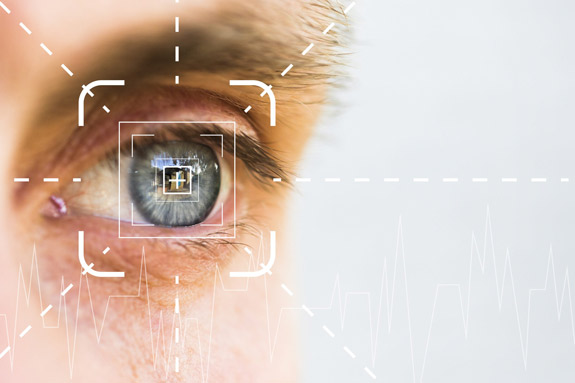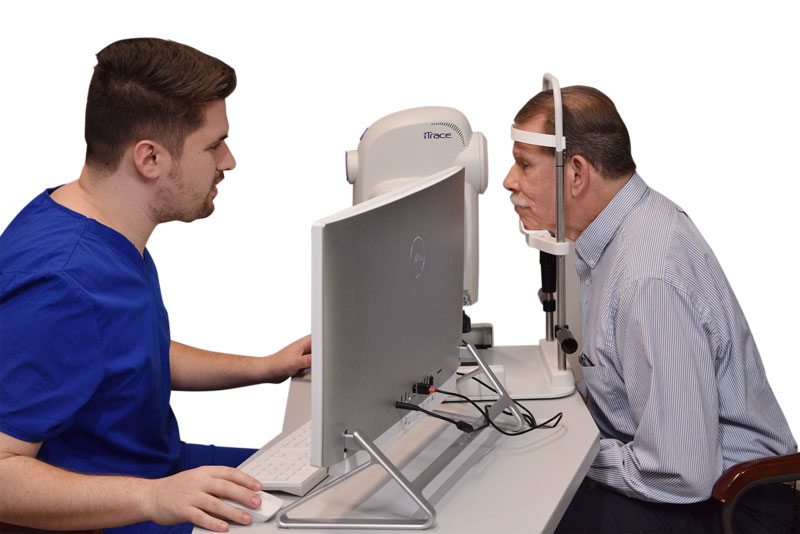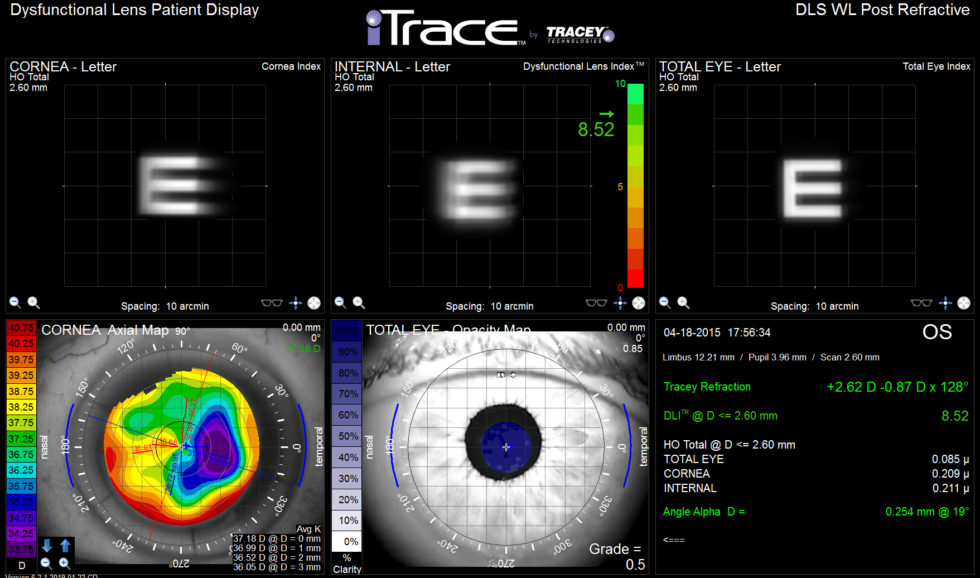
The study was approved by the institutional review board. It should be noted that the surgery occurred on different days with an interval of at least 2 weeks between eyes of the same patient. This prospective interventional comparative clinical study enrolled 120 eyes of 60 patients subjected to bilateral multifocal IOL implantation. The aim of this prospective study was to determine if differences in the multifocal IOL surface and its multifocality would mean differences in wavefront data, mainly higher order aberration, such as coma and spherical aberration, and contrast transferred analyzed with MTF between an aspherical multifocal diffractive IOL (Tecnis), a spheric apodized diffractive multifocal IOL (ReSTOR), and a refractive multifocal IOL ReZoom. Wavefront sensors also provide image quality metrics such as the modulation transfer function (MTF), which displays the ratio of image contrast to object contrast for ocular optics as a function of the spatial frequency of a sinusoidal grating. Aberrometers provide an objective measurement of optical aberrations that include sphere, cylinder, and higher order aberrations, such as spherical aberration, coma, trefoil, and other ones.

Wavefront sensors available now have added quite useful information on the optical quality of the eye. The IOL ReZoom is a second-generation refractive multifocal IOL and distributes light over five optical zones.

The multifocal diffractive ReSTOR has a central 3.6-mm apodized optic region where 12 concentric diffractive zones on the anterior surface have a gradual reduction in diffractive step heights from the center to the periphery. The multifocal diffractive IOL Tecnis ZM900, based on the Huygens-Fresnel principle, has a prolate aspheric anterior surface which reduces spherical aberrations. In order to improve visual quality after cataract removal, IOL materials and designs have been extensively studied worldwide. The intraocular light-scattering and higher order aberrations due to refractive or diffractive optics may lead to a poor retinal image quality and undesirable symptoms such as disability glare, halos, and reduction of contrast sensitivity in patients implanted with multifocal intraocular lenses (IOLs).

Both diffractive IOLs showed similar spherical aberration, which was significantly better with the full-diffractive IOL Tecnis than with the refractive IOL ReZoom. Conclusions:ĭiffractive IOLs studied presented similar MTF curves for a 5 mm pupil diameter. Similar MTF curves were found for the aspheric multifocal IOL Tecnis and the spheric multifocal IOL ReSTOR, and both performed better than the multifocal IOL ReZoom in a 5 mm pupil ( P < 0.001 at all spatial frequencies). Spherical aberration was significantly higher in the ReZoom group ( P = 0.007). The ReSTOR group provided better uncorrected near visual acuity than the ReZoom group ( P < 0.001), but similar to the Tecnis group.

The mean uncorrected distance visual acuity was similar in all three groups of multifocal IOLs. The comparison of MTF and aberration between the intraocular lenses was performed using analysis of variance (ANOVA), followed by the Dunn test when necessary. Forty eyes received the diffractive ReSTOR (Alcon), 40 eyes received the refractive ReZoom (Advanced Medical Optics) and 40 eyes, the Tecnis ZM900 (Advanced Medical Optics). Uncorrected distance and near visual acuity, and wavefront analysis including MTF curves (iTrace aberrometer, Tracey Technologies, Houston, TX, USA) were measured in 60 patients after bilateral IOL implantation with 6 months of follow-up. This was a prospective, interventional, comparative, nonrandomized clinical study. To evaluate wavefront performance and modulation transfer function (MTF) in the human eye after the implantation of diffractive or refractive multifocal intraocular lenses (IOLs).


 0 kommentar(er)
0 kommentar(er)
